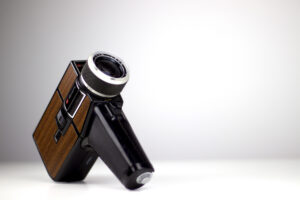Whether you’re a college student or a structural engineer, knowing the fundamental ideas and processes behind product design could be useful. Once the final product arrives in the hands of a consumer, the ideation process is rarely thought of.

But successful development demands constant change, and there’s no way of knowing what might come next if you don’t know how things were made before. And with sustainable product design at the forefront of industrial innovation, paying attention to what works is more important than ever.
Successful product design is the result of skilled teams and constant advances in the development sector, including a few of the processes listed below.
Why is product design important?
Product design is one of the core factors concerning a product and its legacy. It influences every step of the buying process, from catching the eye of consumers, influencing sales figures, and providing simple and efficient functionality for the user. Lifespan should also be considered – and that’s why durability is a key consideration in sustainable product design.
When innovators know what worked well in a certain product line, they can influence decisions across the board when it comes to future products and services. Many are now advertised online, often replacing bricks and mortar and playing a key role in shaping an e-commerce industry worth £133bn in the UK alone.
What are the steps involved in product development?
1. Ideation
Ideation is the process of brainstorming the first few ideas for the product. These might involve what it looks like, which form it will take, how it should be used, and the purpose it serves to its user. These core principles will help designers and brands to gather initial ideas.
2. Market research
Designers need to understand the product’s purpose and the needs of the people who will use it. Speaking directly with prospective and proven customers will help brands to understand why they use the product and listen to any issues they might be experiencing with it. These snippets then turn into pragmatic approaches that influence the next product.
3. Design phase
After conducting market research for targeted demographics, the design process can begin. Many UK-based and international leading brands and product developers create digital designs using CAD software, which offers more possibilities for new designs and an accurate insight to the product’s end feel.
4. Prototyping
After the design phase has reached a conclusive and functional point, brands then need to test the first few products to see how their theories play out in practicality. These first few editions are called prototypes, and they’re not typically released to the public. A few selected people or companies might be chosen to make the last tweaks to the product, correcting any minor errors.
5. Testing
The finalised prototype model will then be saved. This presents an opportunity for potential customers to hold and use the product in its final physical form. A thorough and comprehensive testing process should then be initiated to guarantee safety, functionality, and durability.
6. Manufacturing
Finally, once the testing phase has proven the new product’s potential, it can start to be produced on the commercial market. Different products rely on different manufacturing methods, but these might include injection moulding, 3D printing, die casting, blow moulding, or even manual skills like carpentry.

